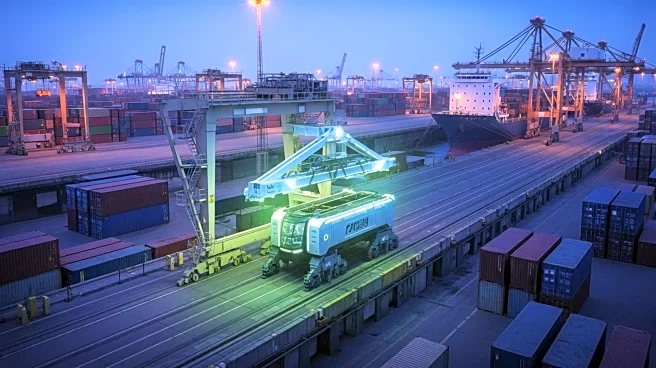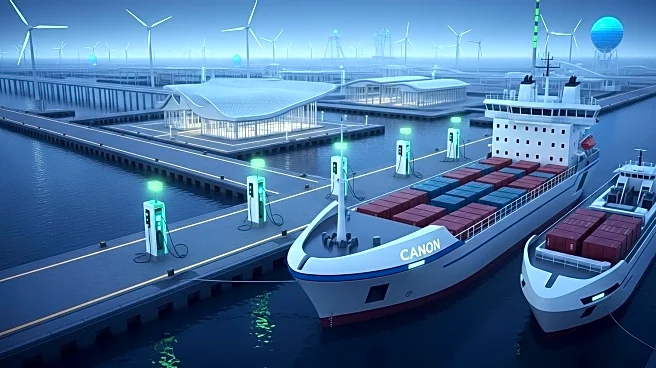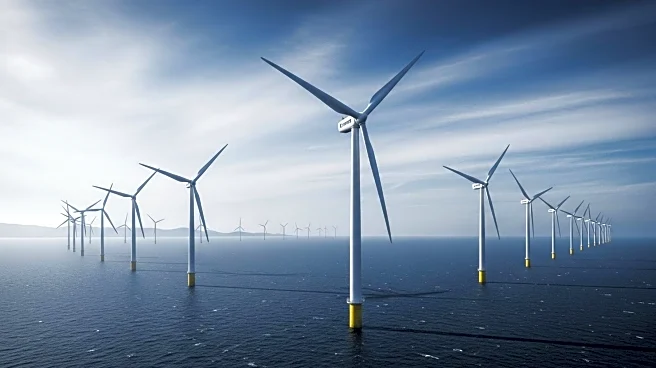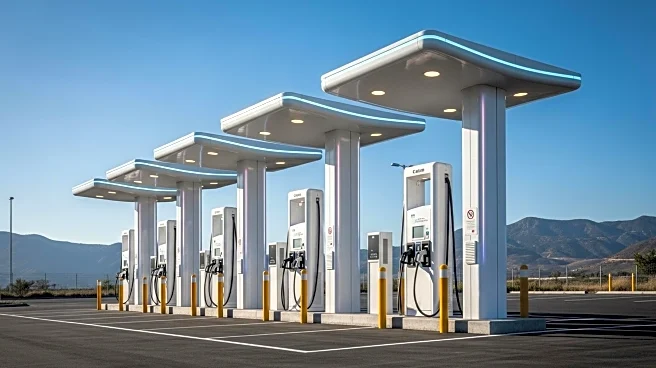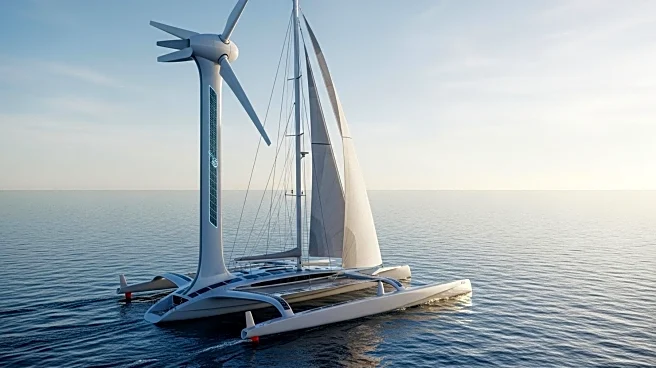What is the story about?
What's Happening?
A new whitepaper titled 'From Quay to Sea: A Port Decarbonization Roadmap' outlines a comprehensive strategy for reducing emissions at ports through electrification. The roadmap, developed by TFIE Strategy, addresses the significant environmental impact of ports, which are major sources of diesel exhaust and other pollutants. The strategy involves a phased approach, starting with the electrification of ground equipment such as yard tractors and forklifts, followed by harbor vessels like tugs and ferries, and extending to shore power for ships at berth. The plan also considers the use of offshore wind and solar power to meet increased electricity demands. The roadmap emphasizes the competitive advantage of electrified ports, which can offer lower costs and healthier working conditions, thereby attracting more business.
Why It's Important?
The decarbonization of ports is crucial for reducing the environmental impact of global trade hubs that are often located near urban areas. Electrifying port operations can significantly cut emissions, improve air quality, and enhance public health for nearby communities. This transition is also economically strategic, as ports that reduce their carbon footprint may attract more business from companies prioritizing sustainable supply chains. The roadmap suggests that ports failing to decarbonize could lose cargo and revenue as global shipping trends shift away from fossil fuels. The initiative aligns with broader efforts to combat climate change and transition to renewable energy sources.
What's Next?
The roadmap outlines a long-term vision extending to 2050, with incremental steps to be taken over the coming decades. Ports are encouraged to begin with the electrification of ground vehicles and gradually move towards more complex systems like shore power and offshore wind integration. The plan anticipates potential challenges such as grid expansions and ship retrofits, suggesting modular and flexible solutions to adapt to these uncertainties. As ports implement these changes, they will need to navigate regulatory requirements and secure investments to support the transition.
Beyond the Headlines
The decarbonization of ports is not only an environmental imperative but also a socio-economic opportunity. Electrified ports can lead to job creation in renewable energy sectors and improve the quality of life for port workers and nearby residents. The shift also reflects a broader industrial transformation as global trade adapts to decreasing reliance on fossil fuels. This transition could redefine the competitive landscape of international shipping, with ports that embrace electrification gaining a strategic edge.
AI Generated Content
Do you find this article useful?
